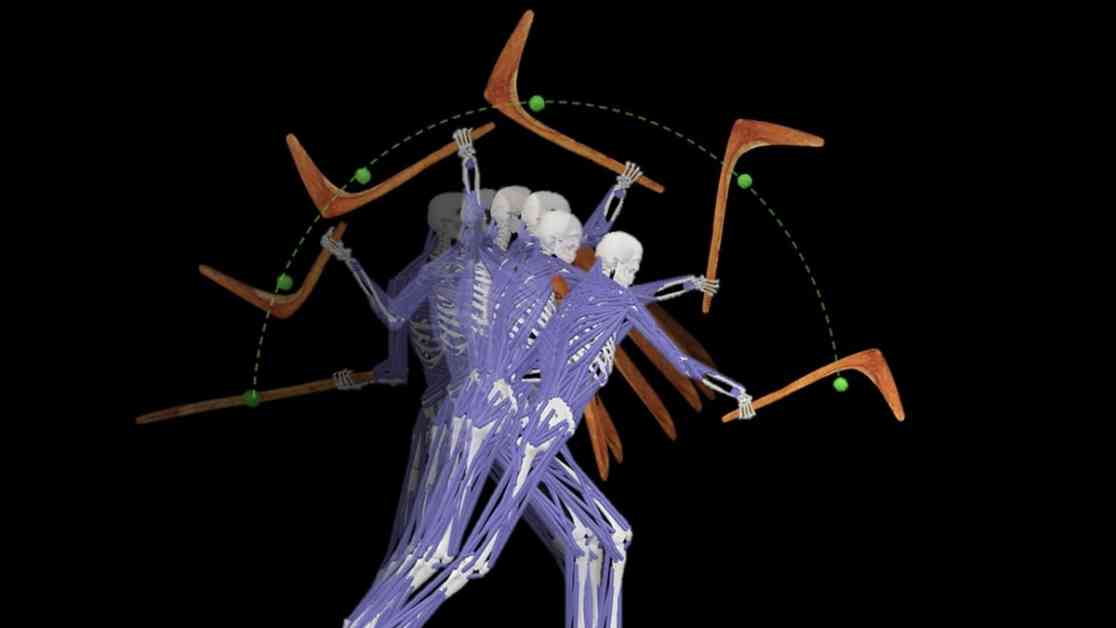Ancient Indigenous Australian Weapons: Biomechanics Study Uncovers Devastating Power
A recent study using state-of-the-art biomechanics technology has shed light on the striking power of two iconic Aboriginal weapons. In a TV series called First Weapons, host Phil Breslin tested out various Indigenous Australian weapons, including the paired leangle and parrying shield and the kodj.
The kodj, a weapon originating from the southwest of Australia, is a versatile tool that combines elements of a hammer, axe, and poker. It can be pivoted by a turn of the wrist to cut in any direction, making it a deadly weapon in close combat. The leangle and parrying shield, on the other hand, are designed for one-on-one combat and are expertly crafted from hardwood.
Through biomechanical analyses, researchers were able to track the kinetic energy and velocities of human and weapon movements during strikes with the kodj and leangle. The results showed that the leangle is more effective at delivering devastating blows compared to the kodj, which is more maneuverable but still capable of causing severe injuries.
While European writers have documented the use of various weapons in conflicts among First Nations in Australia, archaeological evidence for interpersonal violence is rare. However, injuries such as depressions to the skull and “parrying fractures” have been found, indicating the use of shields in defense against weapons.
This study highlights the importance of understanding the biomechanics of ancient weapons and the role of the wielder in delivering deadly strikes. By combining traditional knowledge with modern technology, researchers can gain valuable insights into the design and effectiveness of Indigenous Australian weapons.
Laura Diamond, an NHMRC Emerging Leadership Fellow and Associate Professor at Griffith University, led the research program focused on biomechanical mechanisms of musculoskeletal and orthopedic conditions. Her work underscores the significance of studying ancient weaponry to appreciate the ingenuity and effectiveness of Indigenous Australian tools in combat.










